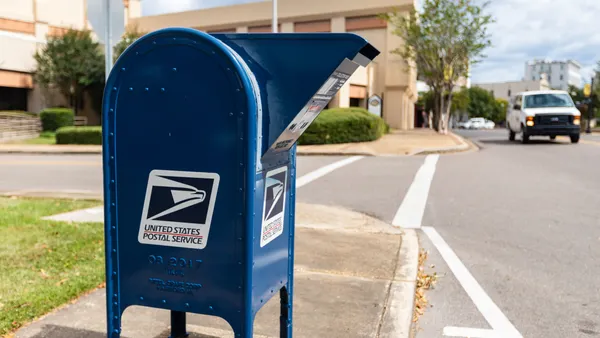Dive Brief:
- U.S. Xpress said it expects a tight truckload market to lead to higher contract rates this quarter, as the season for requests for proposals arrives. In a press release accompanying the company's Q3 forecast, U.S. Xpress officials said driver supply "remains challenging," and these conditions will keep spot market rates above contract rates through 2021.
- Also contributing to elevated prices are government spending, growing consumer activity, and a supply chain that is fraught with disruptive challenges. "Disruptions have impacted capacity, which impacts fleet productivity, which in turn exacerbates overall supply chain volatility," the press release said.
- U.S. Xpress is watching consumer behavior for an attention switch to the services sector. For now, retail inventories are still low, and government research indicates inventory draw-downs in the face of labor and material shortages, the company said. But "without a doubt, a drop in the spot market is going to come. What remains to be seen is whether it'll happen in the winter, spring, or summer of 2022," the report said.
Dive Insight:
The U.S. Xpress report paints a picture that fleets were already familiar with, given their experiences in the first half of 2021: labor shortages caused by the pandemic, supply chain hiccups and shippers asking for more trucks because inventories have not been able to catch up.
The freight demand has been consistent and sometimes even remarkable across segments of the transport industry. The Intermodal Association of North America reported that, in Q2, intermodal had the largest quarterly gain since 2010 as consumer demand pulled more freight in from across the oceans.
U.S. Xpress said federal stimulus spending is having the effect of keeping some drivers from coming back to fleets. That, combined with the stiff competition between companies to hire drivers, means fleets have to raise wages and enhance benefits to attract drivers — costs that will get passed down to the ratepayers.
Fleet sizes for carriers are below normal, the reports said, citing the American Trucking Associations.
"Additionally, many company drivers are electing to run under their own authority, not necessarily increasing capacity, but resulting in reduced utilization and deeper fragmentation of the industry," U.S. Xpress said.
Approximately 51,000 motor carriers received operating authority from the FMCSA in the first half of 2021, the report said. That rate will likely exceed 2020's record of 59,000 new carriers.
The turbocharged freight market will last for all of 2021, the report said, before it takes a dip in 2022. Still, the report warned that a driver shortage will dog the industry.
"We continue to agree with those industry observers who believe that this heightened rate and volume environment will persist through 2021 before turning deflationary in Q1 of 2022," the report says. "Yet, no matter the degree to which freight volumes stabilize over the course of 2021 and into 2022, freight markets will continue to navigate chronic driver shortages."
As Q3 is underway, holiday planning will mean a surge later in the quarter, according to the report.
Freight experts are also watching consumer behavior, as eager American tourists, shut in for more than a year, decide to get out of their homes and visit other states and more eateries.
But the consumer switch to services, which will move dollars away from large freight, could also be delayed by the same U.S. labor shortage troubling trucking. U.S. Xpress said the service industry will see more restaurants and in-person activities open in Q3, but like trucking, "the leisure and hospitality sectors [will] struggle to fill jobs."











